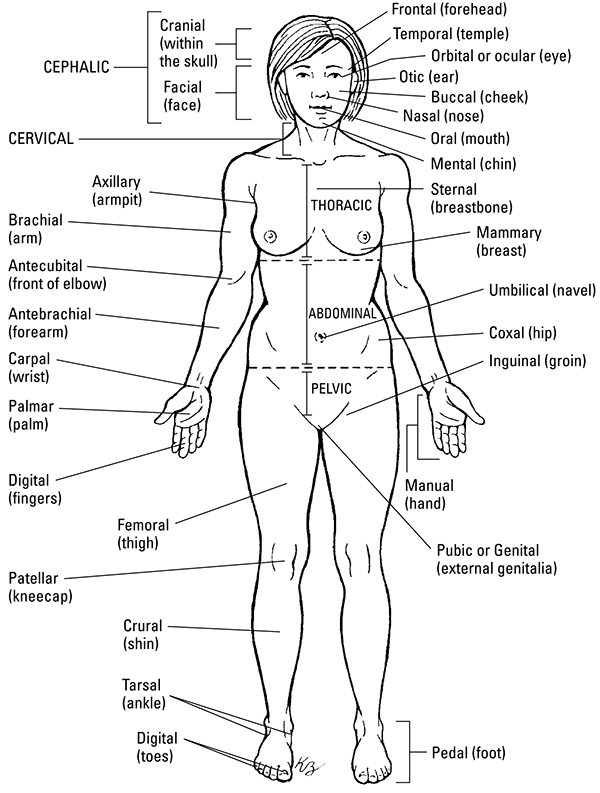The anatomical regions (shown in the diagrams below) compartmentalize the human body. Just like on a map, a region refers to a certain area. The body is divided into two major portions: axial and appendicular.
The axial body runs right down the center (axis) and consists of everything except the limbs, meaning the head, neck, thorax (chest and back), abdomen, and pelvis. The appendicular body consists of appendages, otherwise known as upper and lower extremities (which you call arms and legs).


What are the main regions of the axial body?
Here's a list of the axial body's main regions:
- Head and neck
- Cephalic (head)
- Cervical (neck)
- Cranial (skull)
- Frontal (forehead)
- Nasal (nose)
- Occipital (base of skull)
- Oral (mouth)
- Orbital/ocular (eyes)
- Thorax
- Axillary (armpit)
- Costal (ribs)
- Deltoid (shoulder)
- Mammary (breast)
- Pectoral (chest)
- Scapular (shoulder blade)
- Sternal (breastbone)
- Vertebral (backbone)
- Abdomen
- Abdominal (abdomen)
- Gluteal (buttocks)
- Inguinal (bend of hip)
- Lumbar (lower back)
- Pelvic (area between hipbones)
- Perineal (area between anus and external genitalia)
- Pubic (genitals)
- Sacral (end of vertebral column)
What are the main regions of the appendicular body?
Here's a list of the appendicular body's main regions:
- Upper extremity
- Antebrachial (forearm)
- Antecubital (inner elbow)
- Brachial (upper arm)
- Carpal (wrist)
- Cubital (elbow)
- Digital (fingers/toes)
- Manual (hand)
- Palmar (palm)
- Lower extremity
- Crural (shin, front of lower leg)
- Femoral (thigh)
- Patellar (front of knee)
- Pedal (foot)
- Plantar (arch of foot)
- Popliteal (back of knee)
- Sural (calf, back of lower leg)
- Tarsal (ankle)






